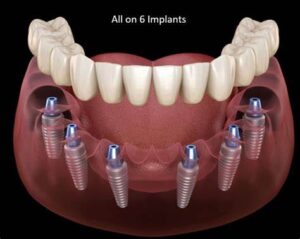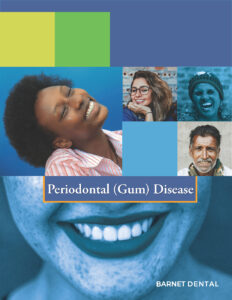Touro College of Dental Medicine
Contact
Hours
- Monday: 9:00am – 9:00pm
- Tuesday: 9:00am – 6:00pm
- Wednesday: 9:00am – 9:00pm
- Thursday: 9:00am – 9:00pm
- Friday: 9:00am – 5:00pm
Touro College of Dental Medicine, located in New York, New York, is a distinguished institution dedicated to providing exceptional dental education, advancing research in the field of dentistry, and delivering compassionate patient care. As a leading dental school, we are committed to preparing competent and compassionate dental professionals who will serve their communities with integrity and excellence. Our faculty comprises esteemed educators and researchers who are passionate about fostering the next generation of dental leaders and advancing oral health for all.
Educational Programs
Dental Degree Programs
- Doctor of Dental Surgery (DDS): Comprehensive program designed to provide students with a solid foundation in dental science, clinical skills, and professional ethics.
- Advanced Dental Education: Postgraduate programs offering specialized training in areas such as orthodontics, periodontics, endodontics, and oral surgery.
Continuing Education
- Professional Development: Continuing education courses and seminars for practicing dentists to enhance their clinical skills, stay updated on the latest advancements in dental research, and meet licensure requirements.
- Specialized Training: Advanced training programs for dental specialists seeking to further develop their expertise in specific areas of dentistry.
Clinical Services
Patient Care
- Comprehensive Dental Care: Range of preventive, restorative, and cosmetic dental services provided by faculty-supervised students and experienced dental professionals.
- Specialty Care: Specialized treatment options for complex dental conditions, including orthodontics, periodontics, endodontics, and oral surgery.
Community Outreach
- Public Health Initiatives: Collaborative efforts with community organizations to promote oral health education, provide dental screenings, and deliver preventive services to underserved populations.
- Community Service: Participation in outreach programs and volunteer initiatives to address the oral health needs of underserved communities and improve access to dental care.
Research and Innovation
Scientific Inquiry
- Translational Research: Conducting cutting-edge research to translate scientific discoveries into clinical applications for improved patient care and outcomes.
- Interdisciplinary Collaboration: Collaborating with other academic institutions and research centers to advance knowledge in various areas of dental science and medicine.
Touro College of Dental Medicine is dedicated to excellence in dental education, research, and patient care, serving the needs of individuals and communities in New York and beyond. Through our commitment to academic excellence, clinical innovation, and community engagement, we strive to make a positive impact on oral health and well-being for generations to come.
Fissured Tongue
A fissured tongue, also known as lingua plicata or scrotal tongue, is a benign condition characterized by the presence of deep grooves or fissures on the dorsal (top) surface of the tongue. These grooves can vary in depth and number, giving the tongue a wrinkled or cracked appearance. The condition is usually harmless and often asymptomatic, but some individuals may experience mild discomfort or sensitivity, particularly when consuming certain foods.
The exact cause of fissured tongue is not well understood, but it is believed to have a genetic component and may be associated with certain syndromes, such as Down syndrome or Melkersson-Rosenthal syndrome. It can also occur in conjunction with other conditions like geographic tongue. Good oral hygiene practices, including regular brushing of the tongue, can help manage symptoms and prevent debris from accumulating in the fissures, which can sometimes lead to irritation or infection. If there are any concerns or persistent symptoms, it is advisable to consult a healthcare professional for further evaluation and management.
All-on-6 Dental Implants
"All-on-6" dental implants are a type of full-arch dental restoration that is supported by six dental implants strategically placed in the jawbone to support a fixed prosthesis. This treatment concept is similar to the "All-on-4" and "All-on-8" dental implant procedures but involves the placement of six implants per arch (either upper or lower) to provide stability and support for the restoration.
Here's an overview of the All-on-6 dental implant procedure:
- Evaluation and Treatment Planning:
- Before undergoing All-on-6 dental implant treatment, the patient will undergo a comprehensive dental examination, including clinical assessment and radiographic evaluation (such as dental X-rays or CBCT scans).
- The dentist or oral surgeon will assess the patient's oral health, bone density, and suitability for implant placement.
- A detailed treatment plan will be developed based on the patient's individual needs and goals.
- Implant Placement:
- The first step in the All-on-6 dental implant procedure involves surgically placing six dental implants into the jawbone at strategic locations to support the full-arch restoration.
- The number and position of the implants may vary depending on factors such as bone quality, anatomy, and the specific requirements of the case.
- Implant placement is typically performed under local anesthesia or sedation to ensure the patient's comfort during the procedure.
- Healing and Osseointegration:
- After implant placement, a healing period of several months is usually required to allow for osseointegration to occur.
- During this time, the implants fuse with the surrounding bone tissue, becoming firmly anchored in the jawbone.
- Temporary restorations may be placed during the healing period to maintain aesthetics and function.
- Restoration:
- Once osseointegration is complete, the dental implants are ready to support the full-arch restoration.
- A custom-made fixed prosthesis, typically made of high-quality dental materials such as porcelain or acrylic, is fabricated to fit securely over the implants and restore function and aesthetics.
- The prosthesis is attached to the implants using special abutments or connectors, providing stability and support for chewing and speaking.
- Postoperative Care and Maintenance:
- After the All-on-6 dental implant restoration is placed, the patient will receive instructions on postoperative care and maintenance.
- Regular dental check-ups and professional cleanings are essential to monitor the health of the implants and surrounding tissues.
- Good oral hygiene practices, including brushing, flossing, and using antimicrobial mouthwash, are important for long-term success.
All-on-6 dental implants offer several advantages over traditional removable dentures, including improved stability, function, and aesthetics. With proper care and maintenance, an All-on-6 dental implant restoration can provide long-lasting and natural-looking results, enhancing both oral health and quality of life. If you are considering All-on-6 dental implant treatment, it's important to consult with a qualified dental professional to determine the best treatment plan for your individual needs.





